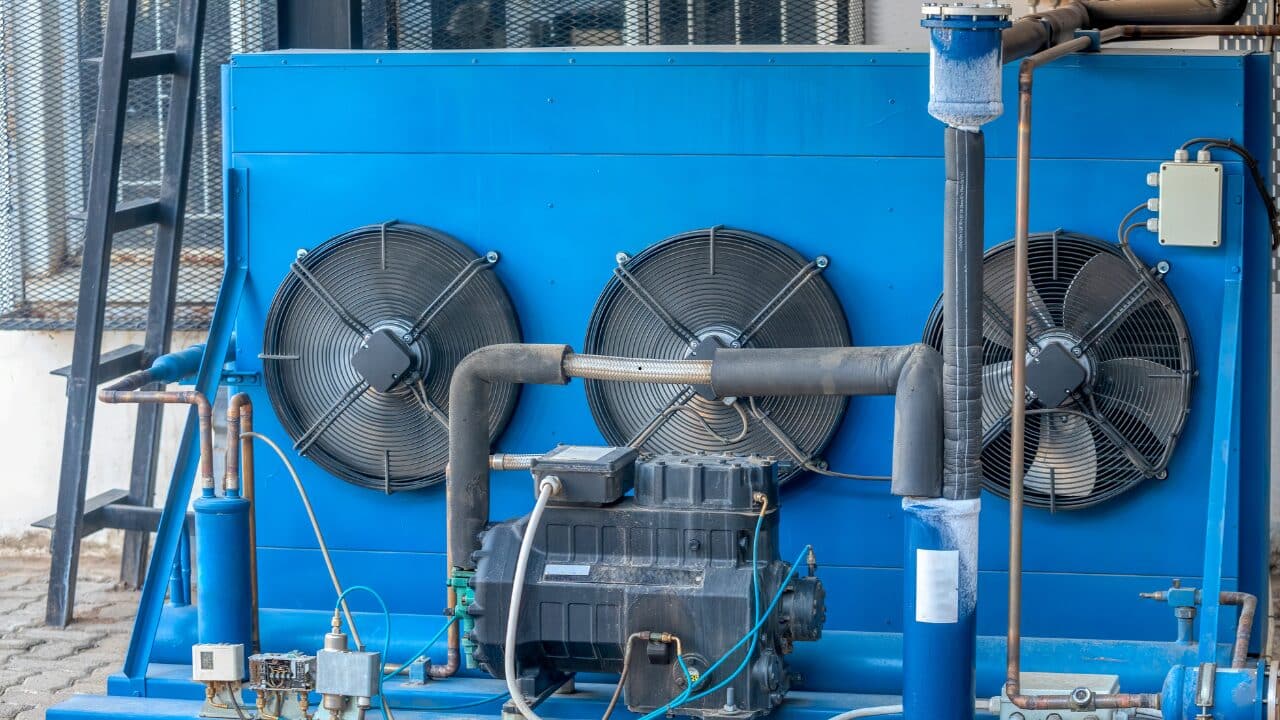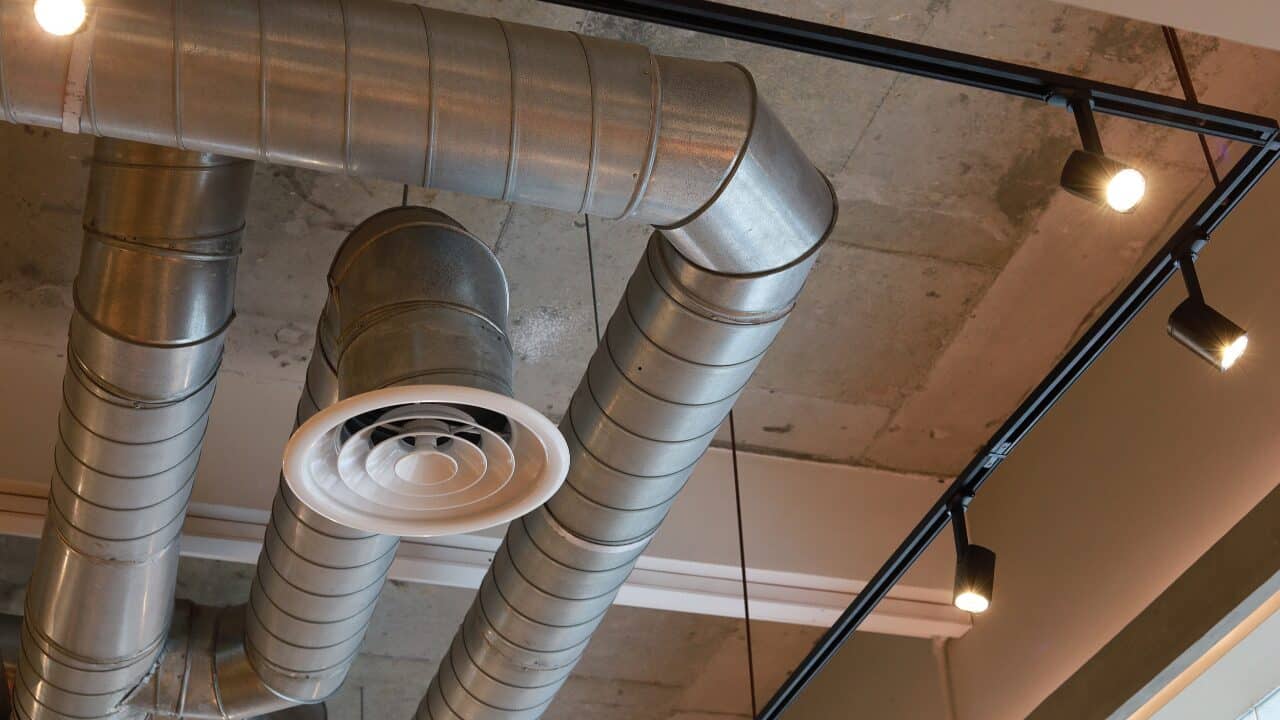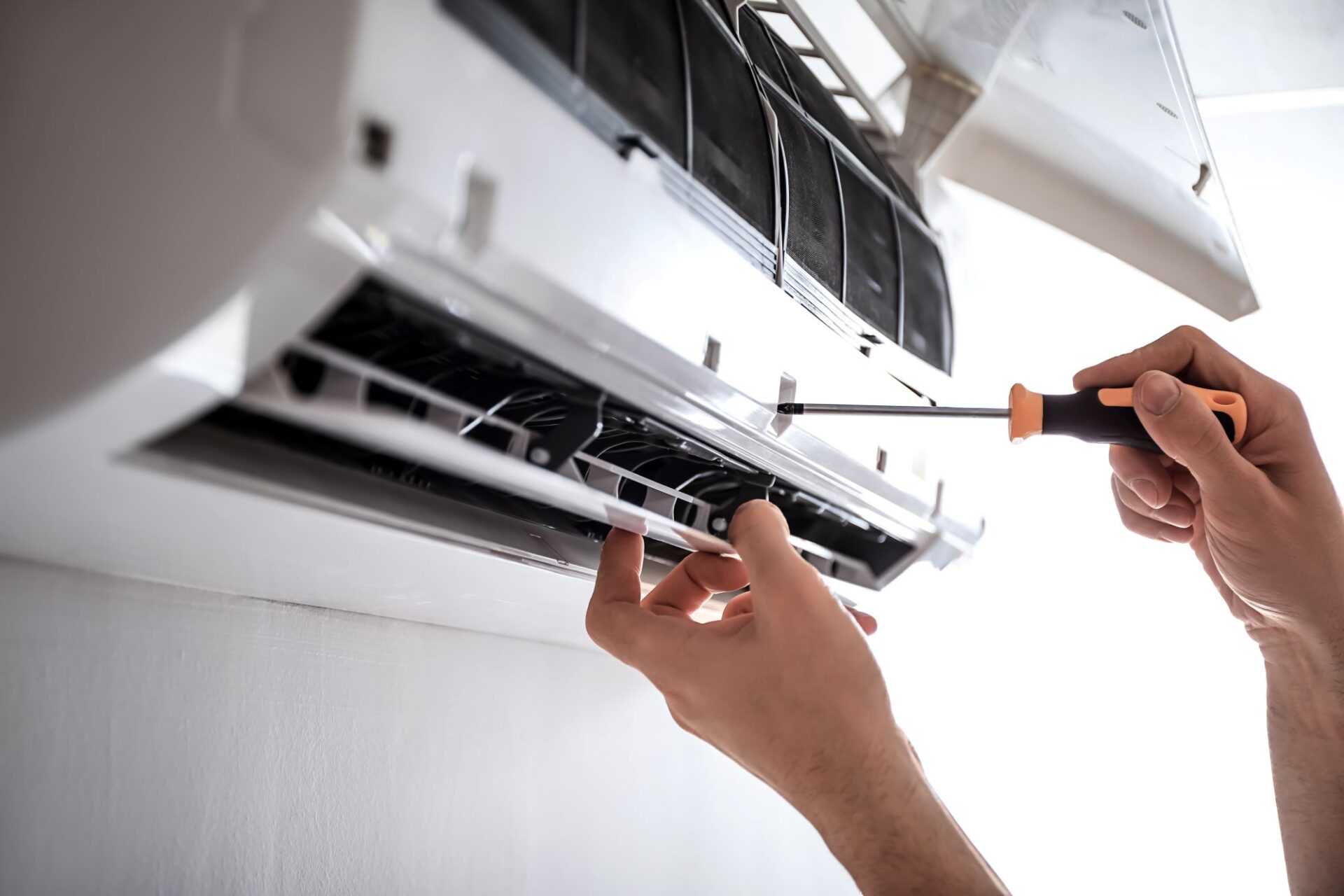Industrial refrigeration systems play a critical role in large-scale construction projects, supporting everything from cold storage warehouses to food processing plants and pharmaceutical manufacturing. These systems must operate efficiently to maintain strict temperature requirements, prevent spoilage, and ensure regulatory compliance.
However, even minor mistakes in design, installation, or maintenance can lead to major consequences, including system failures, excessive energy costs, and costly downtime.
Many industrial refrigeration issues stem from improper system sizing, poor component selection, inadequate purging, or neglected maintenance routines. These mistakes not only reduce efficiency but also increase wear and tear on compressors, valves, and other key components, shortening the overall lifespan of the system.
Addressing these common pitfalls early—before they cause performance failures—can help companies optimize efficiency, reduce operational costs, and extend the longevity of their equipment.
By implementing best practices in system design, maintenance, and component selection, project managers and facility operators can prevent expensive repairs and maximize the return on their investment in industrial refrigeration.
Table of Contents
Key takeaways
- Prevent installation errors by ensuring proper system design, component selection, and insulation.
- Poor maintenance leads to inefficiency, increased costs, and potential system failure.
- Correct sizing, purging, and compressor selection optimize performance and energy use.
- Using high-quality purgers and compressors can improve system reliability and efficiency.
Common errors in refrigeration system installation and how to prevent them
Industrial refrigeration systems require precise engineering to function optimally. Many failures stem from poor installation practices, leading to inefficiency, excessive wear, and costly downtime. Addressing these issues from the start prevents operational inefficiencies and extends equipment life.
Improper system design and layout
A poorly designed refrigeration system can result in inadequate cooling, excessive energy consumption, and safety hazards. Common design mistakes include:
- Incorrect pipe routing: Poorly routed piping can cause pressure drops, inefficient refrigerant circulation, and an increased workload on compressors.
- Non-compliance with industry standards: Ignoring ASHRAE and IIAR guidelines can lead to operational inefficiencies, safety risks, and regulatory penalties.
- Inadequate ventilation and airflow: Blocked or poorly placed evaporators and condensers restrict airflow, reducing heat exchange efficiency and increasing energy costs.
Prevention: Work with experienced engineers to design a refrigeration system that ensures proper refrigerant flow, ventilation, and compliance with industry regulations. Conducting detailed load calculations and thermal modeling before installation helps optimize system design.
Incorrect component selection
Using improperly sized or incompatible components causes inefficiency, frequent breakdowns, and excessive energy consumption. Mistakes include:
- Undersized or oversized evaporators and heat exchangers: A mismatch between these components and the cooling load leads to performance inefficiencies and unnecessary wear.
- Incorrect valve selection: Choosing the wrong expansion valves or solenoids can disrupt pressure balance and cause temperature fluctuations.
Prevention: Select refrigeration components based on precise calculations of system demand and environmental conditions. Danfoss compressors are known for their energy efficiency and reliability in industrial refrigeration, making them a strong choice for optimizing system performance.
Inadequate insulation and sealing
Poor insulation leads to heat loss, higher energy consumption, and frost buildup, which can cause operational inefficiencies and structural damage. Common mistakes include:
- Using low-quality or insufficient insulation materials that deteriorate over time, allowing heat gain and condensation.
- Failing to properly seal joints and fittings, leading to thermal leakage and increased load on the refrigeration system.
Prevention: Use high-quality insulation materials that can withstand temperature fluctuations and harsh industrial environments. Ensure all joints, fittings, and penetrations are properly sealed to minimize air infiltration and heat transfer.
How poor maintenance can lead to inefficiency and increased operational costs
Even a perfectly installed refrigeration system requires regular maintenance. Without it, efficiency declines, energy costs rise, and breakdowns become more frequent. Neglecting routine upkeep often leads to expensive repairs and premature system failure.
Refrigerant leaks and contamination
Leaks in the refrigeration system force compressors to work harder, increasing energy use and accelerating wear. Contaminants such as moisture and oil can also degrade system performance by clogging expansion valves and reducing heat exchange efficiency.
Prevention: Conduct routine leak detection using ultrasonic or infrared sensors to identify small leaks before they become critical. Regularly monitor refrigerant purity and replace filters and driers to prevent contamination from moisture and debris.
Neglecting regular system purging
Non-condensable gases (NCGs) such as air and moisture enter the refrigeration system through leaks and improper charging. These gases increase operating pressure, force compressors to work harder, and reduce heat transfer efficiency.
Prevention: Install an automatic purger system to continuously remove NCGs and maintain refrigerant purity. Manual purging is often inefficient and inconsistent, making automated systems a better long-term solution for large industrial applications.
Failing to monitor compressor performance
Compressors are the most critical and expensive component in industrial refrigeration systems. Poor maintenance leads to reduced efficiency, overheating, and mechanical failures. Warning signs include:
- Increased energy consumption due to declining efficiency.
- Overheating or abnormal noises indicating mechanical strain.
- Inconsistent temperature control, which can disrupt production and storage conditions.
Prevention: Implement predictive maintenance strategies, including vibration analysis and thermal imaging, to detect early signs of compressor wear. Regularly check for proper lubrication, clean condenser coils, and monitor suction and discharge pressures.
The importance of proper sizing, purging, and compressor selection
Selecting the right equipment and ensuring proper system operation prevents inefficiencies and unnecessary operational costs. A well-designed system balances cooling capacity, refrigerant purity, and compressor efficiency.
Correct refrigeration system sizing
An incorrectly sized refrigeration system can lead to serious inefficiencies:
- Undersized systems: Struggle to maintain required temperatures, leading to overheating, frequent cycling, and compressor burnout.
- Oversized systems: Cycle on and off too frequently, increasing wear on compressors and electrical components while wasting energy.
Prevention: Perform accurate cooling load calculations based on facility size, ambient temperature, and required cooling demand. Ensure that all system components, including compressors, evaporators, and condensers, are correctly matched to the expected load.
Effective use of purgers
Purgers are essential for removing NCGs that reduce efficiency and cause pressure fluctuations. A properly functioning purger system helps:
- Lower energy costs by maintaining optimal operating pressure.
- Prevent excessive wear on compressors by reducing unnecessary cycling.
- Improve overall refrigeration efficiency and system longevity.
Prevention: Use automated purgers to ensure consistent removal of NCGs without manual intervention. Older manual systems are often inefficient, leading to inconsistent purging and potential performance issues.
Choosing the right compressor for industrial applications
Compressors are the most energy-intensive part of a refrigeration system, so selecting the right type is crucial. Factors to consider include:
- Cooling load capacity: The compressor must be properly sized for the expected demand.
- Operating conditions: Consider temperature, pressure, and refrigerant type to ensure compatibility.
- Efficiency and reliability: Energy-efficient compressors reduce long-term operating costs.
Prevention: Danfoss compressors are a preferred choice for industrial refrigeration due to their durability, energy efficiency, and adaptability to various refrigerants. Investing in high-quality compressors reduces maintenance costs and extends system lifespan.
Best practices for avoiding costly mistakes
Optimizing industrial refrigeration systems requires a proactive approach. Key best practices include:
- Thorough commissioning and performance testing to ensure all components function correctly before full-scale operation.
- A proactive maintenance schedule with regular inspections, leak detection, and component monitoring.
- Training for personnel on system operation, troubleshooting, and preventive maintenance.
Next steps for optimizing industrial refrigeration systems
Avoiding common refrigeration mistakes in large construction projects requires careful planning, quality equipment, and ongoing maintenance. Ensuring proper system design, routine purging, and efficient compressors helps maximize efficiency, reduce costs, and extend equipment lifespan.
Taking a proactive approach to installation and maintenance prevents costly repairs, reduces energy waste, and ensures long-term reliability in industrial refrigeration systems. Investing in high-quality components and regular upkeep will improve performance and lower operational expenses over time.





